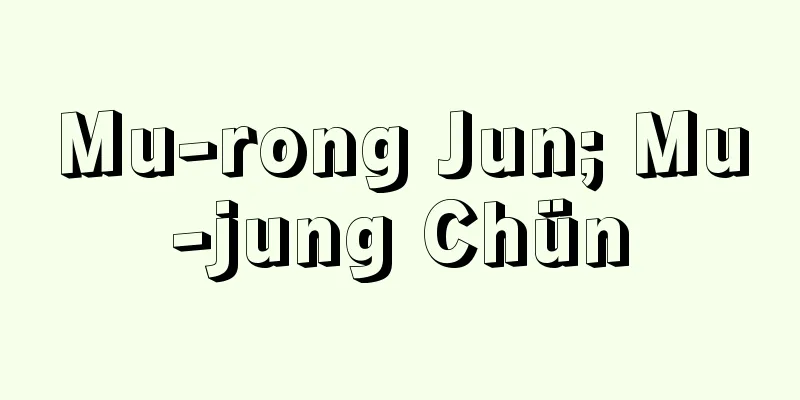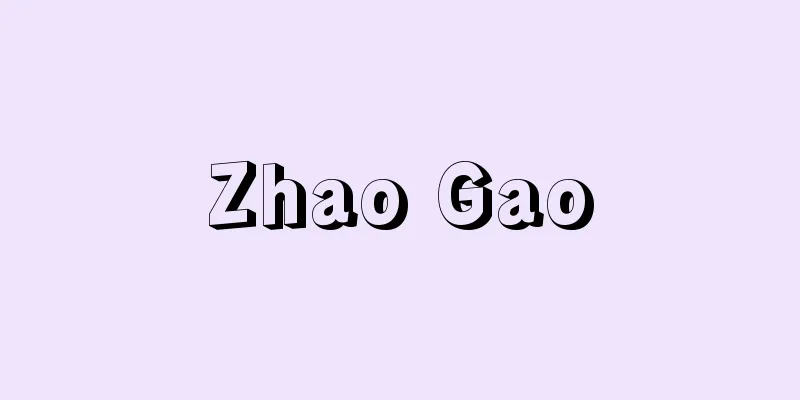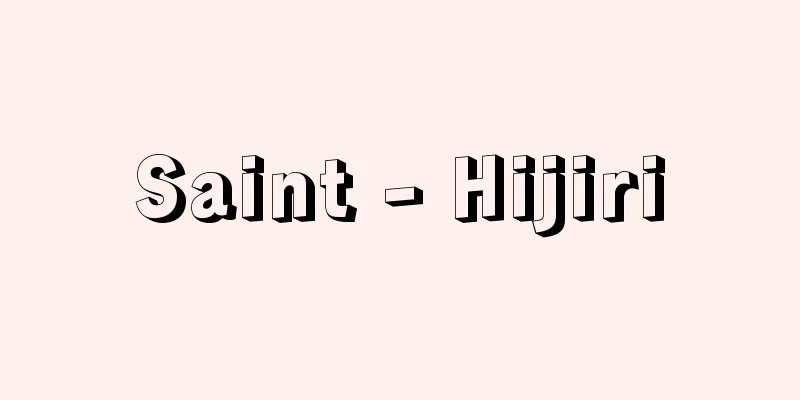Worshipping from all four directions

|
〘Noun〙 (In early modern times, it was also called "shihoubai") An Imperial Court event held every year on January 1st. The Emperor dressed in formal attire and appeared in the east garden of Seiryoden at the hour of the tiger on New Year's Day ( around 4 a.m.), worshipped the Zokusho star, the four directions of heaven and earth, and the tombs of his parents to ward off disasters for the year, and prayed for bountiful harvests, a long reign of the throne, and peace throughout the world. Following this example, everyone from nobles to commoners would bow to the four directions on the morning of New Year's Day, praying for bountiful harvests and safety and good health. In the Meiji era, this was changed to worshiping Kotai Jingu, Toyouke Daijingu, and the gods of the four directions in the south garden of Shinkaden in the Imperial Palace at 5:30 a.m. on New Year's Day. [Season: New Year] [Nishinomiya-ki (c. 969)] ※Tsurezuregusa (c. 1331) 19 “It is amazing how many official events are being held one after another in the rush of spring. What is most interesting is the continuation of the O-nan ceremony followed by the worship in all four directions.” [Glossary] (1) In the “Nihon Shoki - August, First Year of the Reign of Empress Kogyoku,” there is an article about the Emperor traveling to Minami-buchi River and bowing in all four directions to pray for rain, but this was not a New Year’s ritual. (2) In the article on New Year in the second year of the Kanpei era ( 890 ) in the “Kyoto of Emperor Uda,” quoted in the “Secret Collection of Annual Events – New Year,” it is stated that “on the first day of the month, worship is made in all four directions, one in the direction of Qian , one in the direction of the rear earth, and one in the direction of the five stars,” which suggests that the custom had already been turned into a ritual by that time. (3) This ritual, which begins with the worship of the divine star, was strongly influenced by the Chinese philosophy of yin and yang. It is assumed that it was established as a court ritual in the early Heian period, when Chinese cultural artifacts were being rapidly introduced. Source: The Selected Edition of the Japanese Language Dictionary About the Selected Edition of the Japanese Language Dictionary Information |
|
〘名〙 (近世は「しほうばい」とも) 毎年一月一日に行なわれる宮廷行事。天皇が元旦の寅の刻(午前四時頃)に、束帯を着して清涼殿の東庭へ出御し、属星(ぞくしょう)、天地四方、父母の山陵を拝して年災を祓(はら)い、五穀豊穰、宝祚長久、天下泰平を祈願した儀式。これにならって、公卿から一般庶民まで、元旦の朝、四方を拝し、五穀豊穰、無事息災を祈った。明治にいたり、元旦の午前五時半、皇居内の神嘉殿の南庭で、皇大神宮、豊受大神宮、四方の諸神を拝することに改められた。《季・新年》 〔西宮記(969頃)〕※徒然草(1331頃)一九「公事ども繁く、春の急ぎにとり重ねて催し行はるるさまぞ、いみじきや。追儺(ついな)より四方拝につづくこそ、面白けれ」[語誌](1)「書紀‐皇極天皇元年八月」に、天皇が南淵の河上に行幸、四方を拝して祈雨の行法を行なったとの記事があるが、元日儀礼としてのものではない。 (2)「年中行事秘抄‐正月」に引かれる「宇多天皇御記」の寛平二年(八九〇)正月の記事に「朔四方拝云々、向二乾方一、拝二后土及五星一」とあるところから、この頃には儀礼化されていたと考えられる。 (3)属星を拝するところから始まる、中国陰陽思想の影響の強い儀式であり、中国風文物の移入が急であった平安初期に、朝儀として成立したものかと推定される。 出典 精選版 日本国語大辞典精選版 日本国語大辞典について 情報 |
<<: Municipal Trade Law - Shiho Bouekiho
Recommend
Mole shrew (English spelling)
A mole-like mammal of the insectivore family Soric...
Louis XVI - Louis
King of France (reigned 1774-1792). Grandson of Lo...
Kisosaki [town] - Kisosaki
A town in Kuwana County, northeastern Mie Prefectu...
Inkpad - Ink
A coloring material used to attach to seals and s...
HB virus - HB virus
...This type of hepatitis (hepatitis A) does not ...
Ursus spelaeus (English spelling) Ursusspelaeus
…The American black bear migrated from Asia in th...
Arelia - Arelia
…The watershed, which lies somewhat to the west, ...
Kashu
…It is located at the confluence of the Dadu Rive...
raifort sauvage (English spelling) raifortsauvage
…It was introduced to Japan from the United State...
skēnē (English spelling) skene
...theater was surrounded by a wooden structure (...
《Kiss Me Kate》
…Porter also wrote lyrics characterized by comple...
lance - lance
〘Noun〙 A three-pronged thrusting weapon used from ...
Kashima [city] - Kashima
A city located in the southeastern part of Ibaraki...
Taxidermy
…Since these taxidermy specimens are often exhibi...
Sand casting
...Needless to say, the former technique came fir...

![Minamikawara [village] - Minamikawara](/upload/images/67ccf3ea8ec1e.webp)







